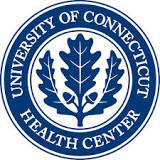Genetic and Functional Analysis of Aplasia Cutis Congenital (ACC)
| Status: | Recruiting |
|---|---|
| Healthy: | No |
| Age Range: | Any |
| Updated: | 11/9/2018 |
| Start Date: | April 2009 |
| End Date: | December 2025 |
| Contact: | Ernst J Reichenberger, PhD |
| Email: | reichenberger@uchc.edu |
| Phone: | 860-679-2062 |
Identification of Mutations That Lead to Aplasia Cutis Congenita in Families and Isolated Cases and Studies of Cellular and Molecular Mechanisms
The goal of this research study is to identify genes and regulatory elements on chromosomes
that cause ACC. The investigators also study tissue samples from patients to learn about the
processes that lead to this disorder.
that cause ACC. The investigators also study tissue samples from patients to learn about the
processes that lead to this disorder.
Aplasia cutis congenita (ACC) or congenital scalp defect is a very rare disorder that affects
bone and skin. The definition for ACC is the localized absence of (normal) skin at the time
of birth (congenital). The skin appears thinner and the underlying structures are visible. We
study mostly the isolated form of ACC with the lesion often being at the vertex of the skull
(at or close to the top of the skull). The bone underlying the lesion is sometimes thinner as
well.
For this study we will:
- Send out study participation kits and consent by phone
- Collect a saliva sample from eligible individuals
- Obtain information regarding ACC
- Document disorder with photos and doctor's letters
- If patients undergo surgery for ACC we ask to obtain some tissue that would otherwise be
discarded
- Isolate DNA from the saliva sample
- Perform genetic analyses of the DNA with the most up-to-date methods available to
identify genetic variations
- Study in the laboratory why the genetic variations cause the disorder
bone and skin. The definition for ACC is the localized absence of (normal) skin at the time
of birth (congenital). The skin appears thinner and the underlying structures are visible. We
study mostly the isolated form of ACC with the lesion often being at the vertex of the skull
(at or close to the top of the skull). The bone underlying the lesion is sometimes thinner as
well.
For this study we will:
- Send out study participation kits and consent by phone
- Collect a saliva sample from eligible individuals
- Obtain information regarding ACC
- Document disorder with photos and doctor's letters
- If patients undergo surgery for ACC we ask to obtain some tissue that would otherwise be
discarded
- Isolate DNA from the saliva sample
- Perform genetic analyses of the DNA with the most up-to-date methods available to
identify genetic variations
- Study in the laboratory why the genetic variations cause the disorder
Inclusion Criteria:
- ACC; unaffected individuals only if part of a participating ACC family
Exclusion Criteria:
- No ACC unaffected individuals only as part of a participating ACC family
We found this trial at
1
site
263 Farmington Ave
Farmington, Connecticut 06030
Farmington, Connecticut 06030
(860) 679-2000

Phone: 860-679-2062
University of Connecticut Health Center UConn Health is a vibrant, integrated academic medical center that...
Click here to add this to my saved trials